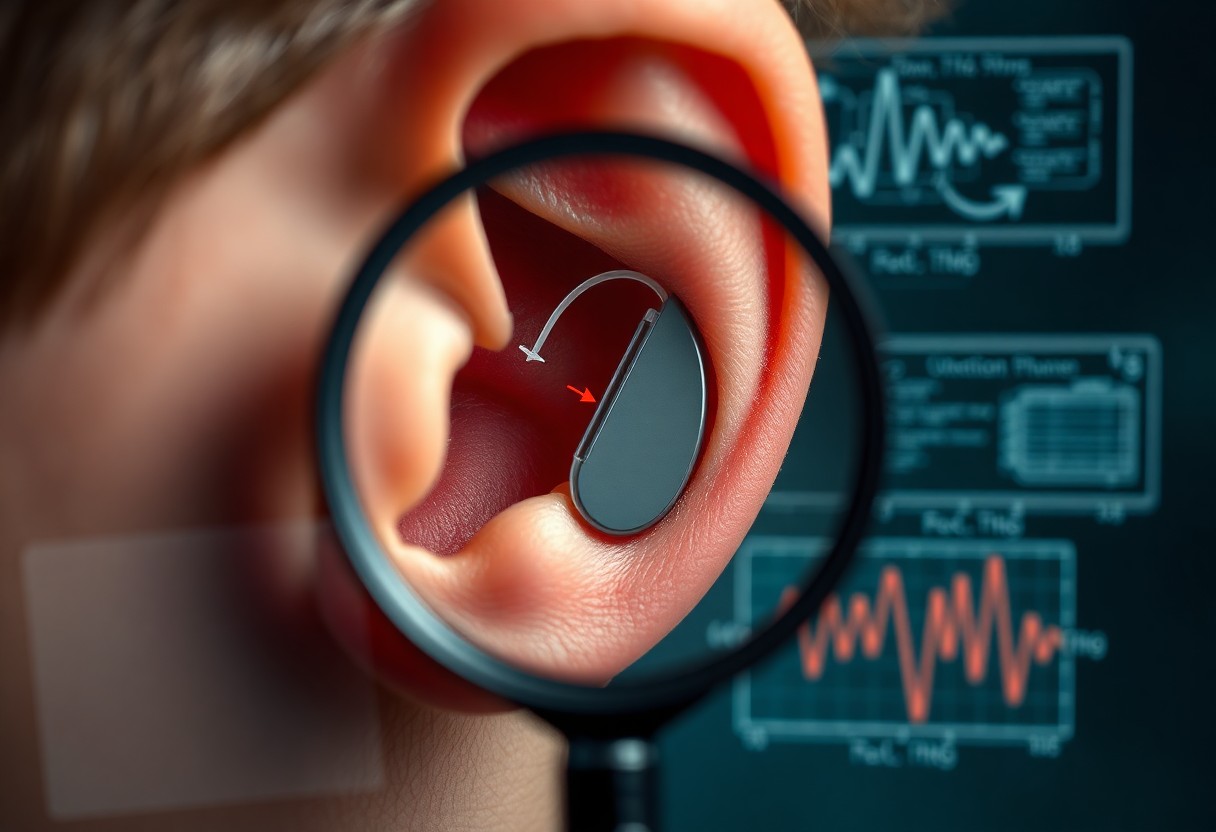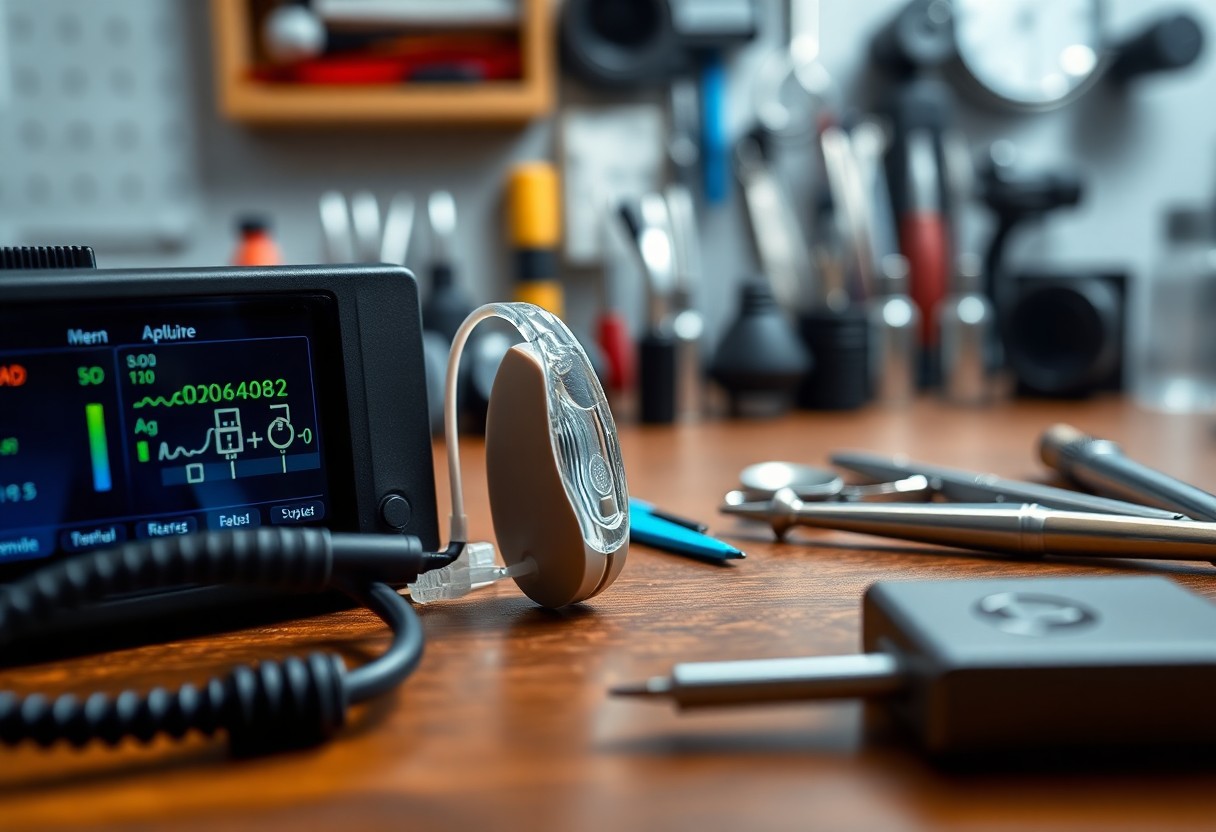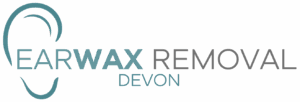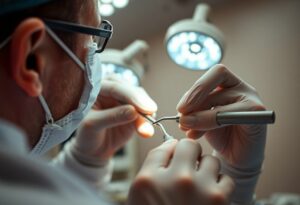With the increasing reliance on hearing aids, it’s vital for you to understand how occlusion can affect their performance. This hidden connection between occlusion and hearing aid malfunctions can impact your listening experience significantly. By recognizing the signs of occlusion, you can ensure that your hearing aids function optimally and enhance your overall auditory experience. In this post, we’ll explore how occlusion occurs and provide tips for maintaining your hearing aids for better sound quality.
Key Takeaways:
- Occlusion can impact the performance of hearing aids, leading to possible malfunctions.
- Understanding the relationship between ear canal occlusion and hearing aid behavior can improve user experience.
- Regular maintenance and adjustment of hearing aids can mitigate occlusion-related issues.
The Mechanics of Sound: How Occlusion Impacts Hearing
The Physics of Sound Propagation
Sound travels through air as a series of waves, moving in compressions and rarefactions. This process involves vibrations transmitted from one particle to another, creating energy that eventually reaches your ears. The frequency and amplitude of these sound waves are fundamental in determining how you perceive sound. When obstacles, such as occlusion, interfere with this flow, it can significantly alter the sound quality and the clarity you experience.
Occlusion Effect: What Happens When Ear Canals are Blocked
The occlusion effect occurs when an object blocks your ear canal, causing you to hear your own voice and other internal sounds more prominently. This can happen with hearing aids, earplugs, or even wax buildup. The result is an unnatural amplification of low-frequency sounds, leading to a muffled auditory experience that can be disorienting and distracting.
Specifically, when your ear canal is blocked, vibrations from your voice resonate within, causing your perception of sound to shift. This internal amplification can make voices sound hollow or echoey, distorting your overall auditory landscape. When using hearing aids, occlusion may lead you to adjust or remove them, disrupting their intended function. Studies indicate that nearly 50% of users report feedback issues related to occlusion, highlights the need for better fitting solutions and awareness of the effects of blockage on sound quality.
Navigating the Occlusion Phenomenon in Hearing Aids
Occlusion as a Double-Edged Sword: Enhanced Sounds vs. Distortions
For you, occlusion can transform sound experiences, offering clarity at times while introducing distortions at others. Amplified low-frequency sounds may enhance your perception of bass tones, yet this same advantage can lead to a muffled audio effect, which detracts from the overall listening experience. The balance between improved auditory input and unwanted reverberations creates a complex relationship that you must navigate for optimal hearing aid performance.
Common Hearing Aid Designs and Their Vulnerability to Occlusion
Different hearing aid designs showcase varying susceptibility to occlusion, impacting your hearing clarity. Behind-the-ear (BTE) models typically have less occlusion due to their placement and air circulation around the ear canal. In contrast, in-the-ear (ITE) and completely-in-canal (CIC) designs can trap sound, increasing the likelihood of occlusion-related issues. You might notice that certain models amplify your voice while wearing them, leading to a sense of echo, especially in CIC devices, which sit deep within the ear canal.

Identifying the Signs: Occlusion-Related Malfunctions
Snapping Sounds and Feedback: Red Flags for Users
Experiencing unexpected snapping sounds or feedback from your hearing aids often indicates an occlusion issue. These auditory disruptions can feel intrusive, distracting you from conversations and noise around. If you notice these symptoms, it’s imperative to inspect your hearing aids and consider environmental factors affecting their performance. Such sounds can signal that your devices are not properly fitting or functioning due to a blockage.
The Role of Earwax and Other Blockages
Earwax accumulation and other blockages can significantly contribute to hearing aid malfunctions. This buildup not only impacts the sound quality but can also cause discomfort and irritation in your ear canal. When sound waves can’t travel freely, your hearing aids may struggle to amplify sounds effectively, leading to distortion or an overall decrease in hearing performance. Regular cleaning and maintenance of both your hearing aids and ears are necessary to avoid these problems.
Over 60% of hearing aid users experience issues related to earwax, which can create a barrier preventing optimal sound processing. Blockages may also arise from debris or moisture, further complicating the performance of your devices. Regular visits to your audiologist for assessments can help keep your hearing aids functioning correctly and ensure your ear health is maintained. Prioritizing ear hygiene and device cleaning can prevent these issues and improve your overall experience with hearing aids.
The Direct Correlation Between Occlusion and Hearing Aid Functionality
Analysis of User Reports: Malfunction Patterns Linked to Occlusion
User reports frequently highlight a spectrum of issues directly tied to occlusion. You might encounter feedback such as inconsistent sound quality, unexpected feedback noise, or a feeling of ear fullness. These manifestations often correlate with changes in earwax buildup or incorrect hearing aid positioning, emphasizing the significant impact occlusion has on your device’s performance.
Expert Opinions: Audiologists Weigh in on Occlusion Concerns
Audiologists observe that occlusion can severely compromise hearing aid effectiveness. Many professionals emphasize that even minor occlusive events, such as earwax accumulation, can lead to drastic reductions in sound output. Regular maintenance, including cleaning and proper fit, is important to mitigate these issues.
Audiologists also highlight that occlusion effects can vary based on individual ear anatomy and hearing aid design. For instance, closed-fit devices may amplify occlusion-related sounds, leading to discomfort and distortion. Regularly scheduled check-ups and adjustments are advised, allowing professionals to identify occlusion early and recommend strategies to ensure optimal hearing aid functionality. Your experience can improve with proactive management of these factors.
Maintenance Strategies: Preventing Occlusion-Related Issues
Regular Cleaning Protocols for Optimal Function
Maintaining your hearing aids through regular cleaning is important to prevent occlusion-related issues. Wipe the exterior with a soft, dry cloth daily, and utilize a small brush to remove debris from the speaker and microphone areas. Weekly, you should inspect and clean the ear moulds using a mild soap solution and ensure they are adequately dried to avoid moisture buildup. These simple steps help extend the life of your devices and keep your auditory experience clear.
Custom Ear Molds: A Solution to Minimize Occlusion
Custom ear molds provide a tailored fit for your hearing aids, reducing occlusion and enhancing sound quality. By being molded specifically to the shape of your ear, these devices can effectively block external noise while delivering a clear auditory experience. Their design helps to minimize feedback and improve comfort, making daily wear more enjoyable.
Investing in custom ear molds can dramatically reduce issues associated with occlusion. Studies have shown that users fitted with custom molds experience less sound distortion and reduced feedback anomalies. The snug fit prevents sound leakage and enhances the overall quality of your hearing experience. Many audiologists recommend custom ear molds as they adapt to your unique ear anatomy, which means you benefit from optimized acoustic performance tailored specifically to your ear’s geometry.
Innovations in Hearing Aid Technology: Battling Occlusion
Noise-Cancellation Features and Their Efficacy
Advanced noise-cancellation features have become vital in modern hearing aids, allowing you to focus on desired sounds while minimizing disruptive background noise. By utilizing sophisticated algorithms, these devices can differentiate between speech and ambient sounds, enhancing clarity and reducing auditory fatigue. The effectiveness of these features varies by model, but many offer customizable settings, empowering you to adjust the device according to your environment.
Future Trends: What’s Next in Hearing Aid Design?
The future of hearing aid design is leaning towards even greater personalization and integration with smart technology. Innovations like AI-driven sound processing, connectivity with smartphones, and biomechanical sensors are set to revolutionize user experience. These advancements aim to enhance sound fidelity, specifically addressing occlusion effects, and provide real-time adjustments based on your surroundings. As manufacturers invest in research, you can expect devices that intuitively adapt to individual preferences and lifestyles, significantly improving hearing accessibility.
Real-Life Experiences: Users Speak Out
Personal Accounts of Occlusion-Driven Hearing Aid Adjustments
You may find that hearing aid adjustments following occlusion experiences are common among users. One individual shared how switching to a vented earmold eliminated the muffled sounds they encountered, allowing for clearer communication. Another user highlighted the importance of regular check-ups with audiologists to fine-tune devices based on personal feedback, significantly improving their hearing experience.
Community Insights: Best Practices From Seasoned Users
Gathering insights from seasoned users unveils several effective strategies for managing occlusion issues with hearing aids. Many advocate for regular cleaning and maintenance of hearing devices to prevent wax buildup, which can exacerbate occlusion. Users often recommend trying different ear tips or molds, as comfort and fit vary widely. Additionally, audiobook clubs and support groups can help you learn firsthand from shared experiences, providing valuable tips on what works best in different situations.

Fostering Awareness: The Role of Professionals in Educating Users
Training Programs Focused on Occlusion Nutrition
Training programs centered on occlusion nutrition help you understand how factors like earwax buildup and material choice affect your hearing aid performance. These programs educate audiologists on identifying symptoms and implementing effective preventative strategies, ensuring patients receive tailored advice on maintaining their devices.
Building Effective Dialogues Between Patients and Audiologists
Open communication enhances the relationship between you and your audiologist, fostering a solution-oriented approach to occlusion-related issues. Regular discussions about your experiences with hearing aids can lead to better understanding of your needs and more effective solutions tailored to your specific concerns.
Building effective dialogues enhances outcomes for those using hearing aids. Consistent, open lines of communication allow you to express your experiences and concerns, which audiologists can address through tailored solutions. Regular check-ins and advice on care routines foster a collaborative environment, ensuring that adjustments and maintenance are aligned with your lifestyle and individual needs. This ongoing dialogue not only builds trust but facilitates a proactive approach to managing potential occlusion issues.
Conclusion
As a reminder, understanding the subtle link between occlusion and hearing aid malfunctions is imperative for optimal device performance. When sound pathways are obstructed, it can lead to distorted audio and discomfort, affecting your overall hearing experience. Regular maintenance and adjustments tailored to your specific needs can prevent occlusion-related issues. By staying informed and proactive, you can ensure that your hearing aids function effectively, enhancing your ability to engage with the world around you.
FAQ
Q: What is the relationship between occlusion and hearing aid performance?
A: Occlusion occurs when the ear canal is blocked, which can affect sound quality in hearing aids. When the ear is blocked, it can lead to pressure changes and alter the way sound is perceived through the device.
Q: How does occlusion affect sound quality in hearing aids?
A: Occlusion can result in muffled sounds or an echo effect, making it challenging for users to hear clearly. This occurs because the device is not able to transmit sound effectively when the canal is obstructed.
Q: What are common causes of occlusion in hearing aids?
A: Common causes include earwax buildup, improper fitting of the device, or use of certain types of ear tips that may seal the ear canal too tightly. Regular maintenance and proper fitting can help mitigate these issues.
Q: How can I minimize occlusion with my hearing aids?
A: Ensuring that the hearing aid is properly fitted by a professional, using appropriate ear tips, and regularly cleaning the device can help reduce the likelihood of occlusion and improve overall sound quality.
Q: When should I consult a professional about occlusion and my hearing aids?
A: If you experience persistent issues with sound quality, discomfort, or if you notice changes in your hearing, it is advisable to consult an audiologist or hearing aid specialist for evaluation and adjustment.



